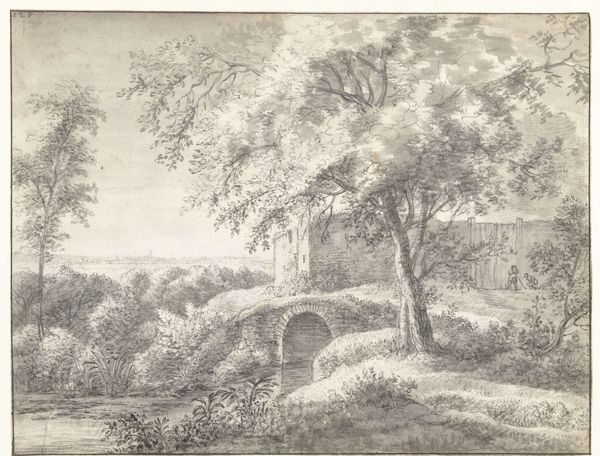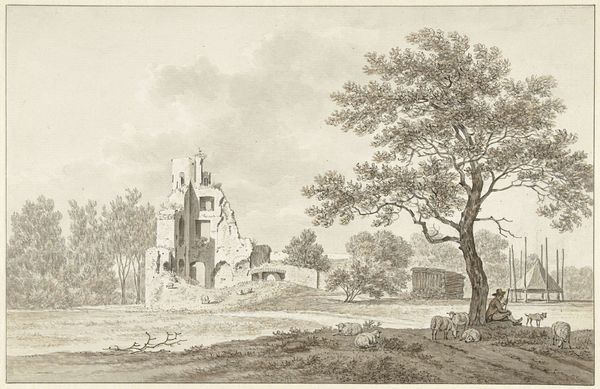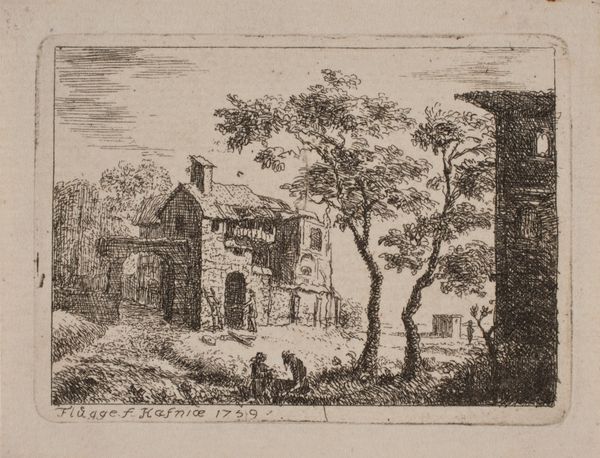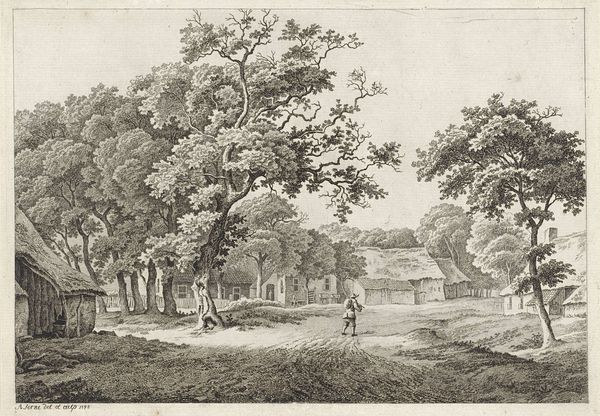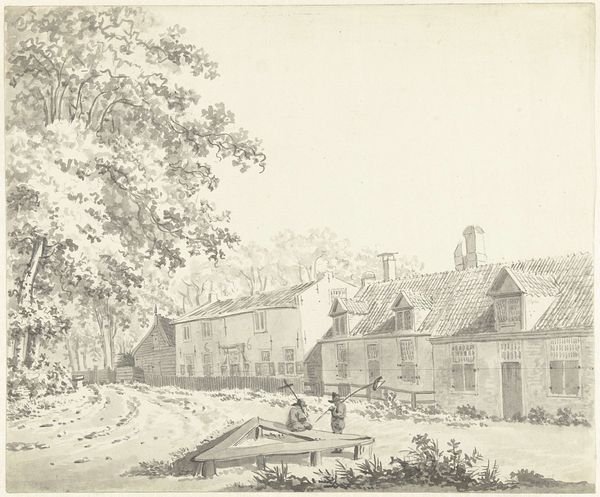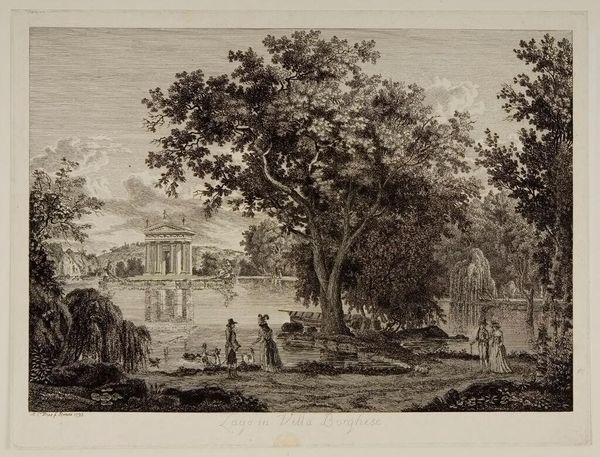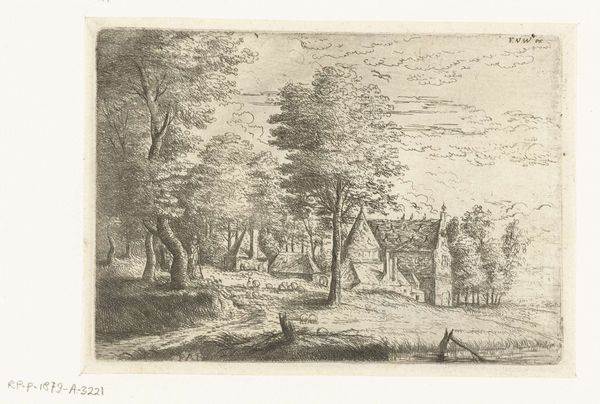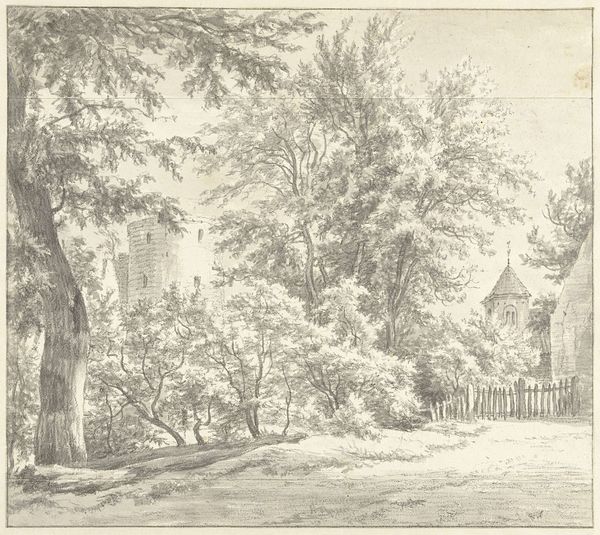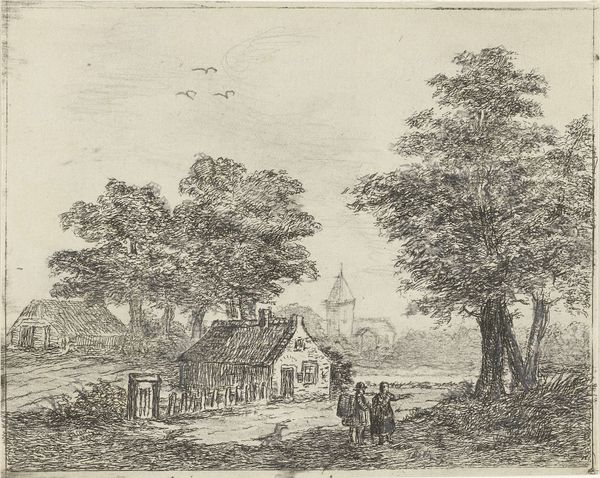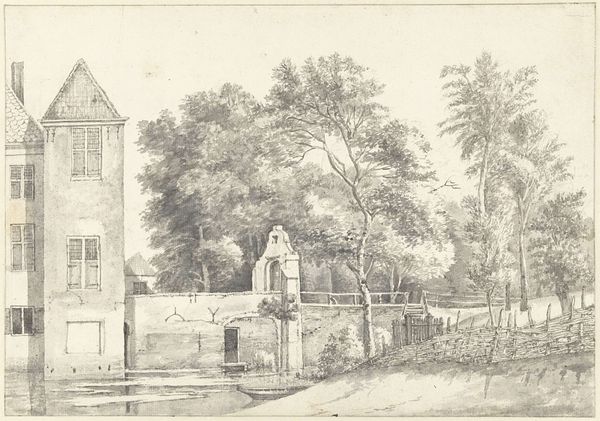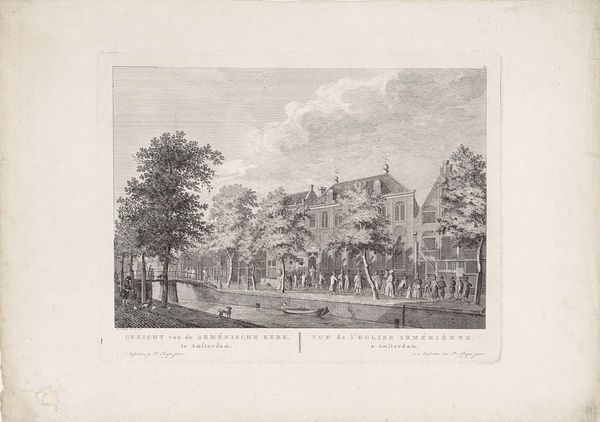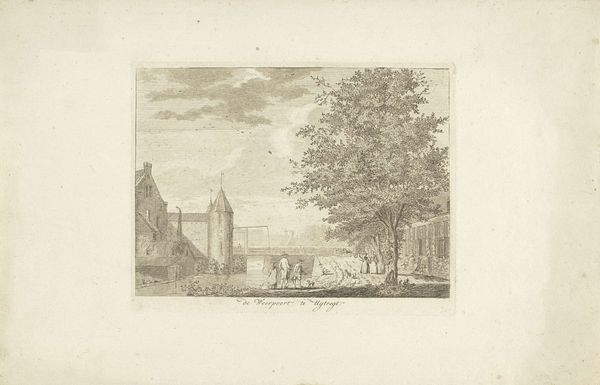
Dimensions: support: 245 x 390 mm
Copyright: CC-BY-NC-ND 4.0 DEED, Photo: Tate
Editor: Here we have Alexander Cozens' "In the Farnese Gardens, Rome." It's a hazy landscape, rendered in ink, and it feels so dreamlike. What do you see in this piece that maybe I'm missing? Curator: It’s interesting how Cozens uses a limited palette to create such depth. Almost like a memory fading. Do you notice how the architecture seems to blend with the natural forms? Editor: It does! The ruins and the trees are almost one and the same. Curator: Perhaps it’s about the transient nature of empires, how nature reclaims even the grandest structures. Or maybe it’s just a pretty picture, what do you think? Editor: I love that idea of nature reclaiming things. Food for thought! Curator: Absolutely, I'm glad you found it interesting.
Comments
tate 6 months ago
⋮
http://www.tate.org.uk/art/artworks/cozens-in-the-farnese-gardens-rome-t08117
Join the conversation
Join millions of artists and users on Artera today and experience the ultimate creative platform.
tate 6 months ago
⋮
Alexander Cozens is best known for the treatises he wrote in which he attempted to categorise landscape types. His most famous is 'A New Method of Assisting the Invention in Drawing Original Compositions of Landscape'(1786), where he explained how to create imaginary landscapes by using ink blots. Paul Oppé wrote extensively about Cozens's theoretical approach to landscape, helping to elucidate his complex systems.Cozens spent two years in Italy in the 1740s. Nearly sixty watercolours and drawings have survived from his stay in Rome, as well as a sketchbook. This drawing, although depicting a specific location in the Farnese Gardens, is reminiscent of the work of the classical masters of landscape, such as Gaspard Dughet. Gallery label, September 2004
